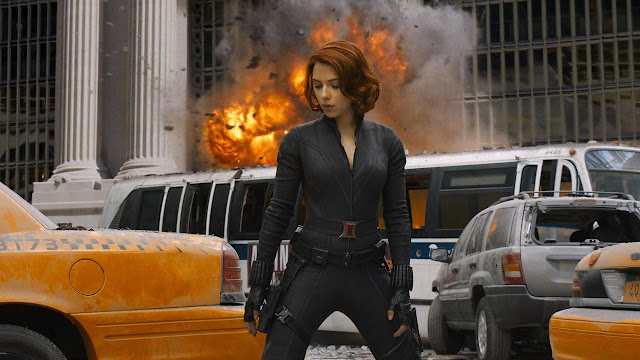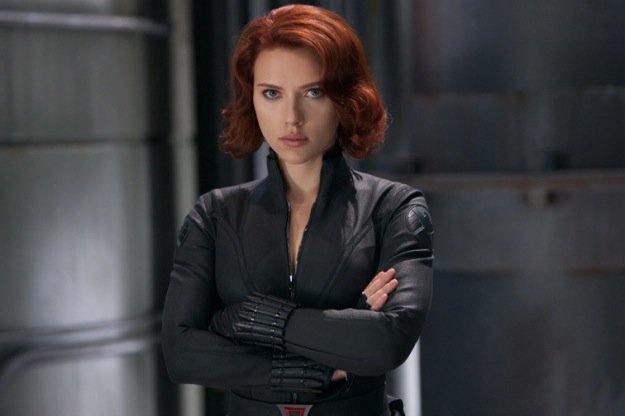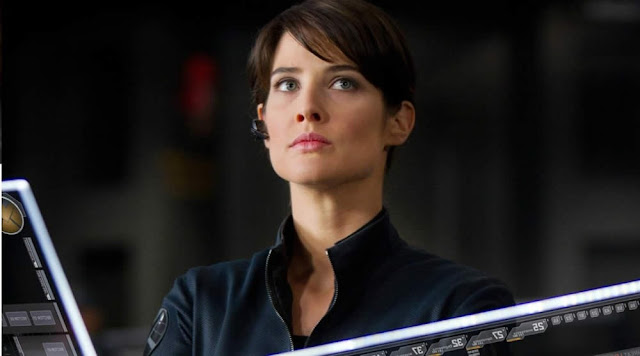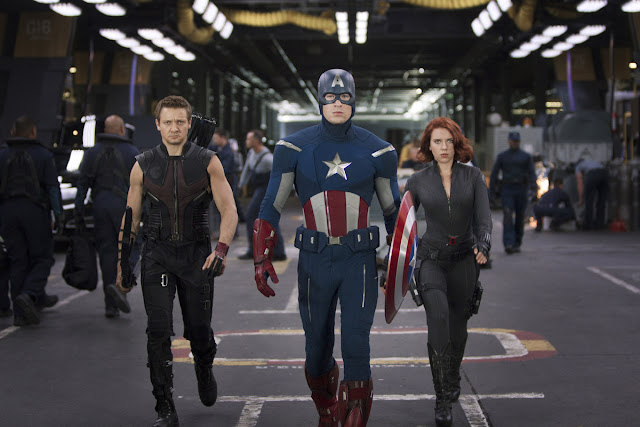 |
| Game of Thrones |
The radical notion that women like good movies
One of the aspects that struck me in the show though, is the portrayal of motherhood. Far from being absent or swept to the side, the film’s mothers are a driving force in the plot development and are some of the most multi-dimensional of the series (credit has to be given to the actresses who play them).
 |
| Game of Thrones |
 |
| The Avengers movie poster |
 |
| Jeremy Renner and Scarlett Johansson in The Avengers |
 |
| Samuel L. Jackson as Nick Fury in The Avengers |
 |
| Scarlett Johansson as Black Widow in The Avengers |
 |
| Jeremy Renner, Scarlett Johansson, and Chris Evans in The Avengers |
———-
Disney. The word is so synonymous in my mind with “animated feature films” that it’s like using “Kleenex” for “tissue.” When children come to my house, as they sometimes do, they’re invariably drawn to my huge selection of “Disney movies,” only about 70% of which are actually affiliated with Disney in any way shape or form. I enjoy most of them, or I wouldn’t own them. They each have their own problems, but a good many of them have something truly positive that I treasure. And what better way to start a deconstruction of animated feature films with the one I knew first and loved best: The Little Mermaid?
———-
To read more of Ana’s writings, including her snarktastic literary deconstructions, visit her website at www.AnaMardoll.com.
 |
| Natasha Romanoff / Black Widow (Scarlett Johansson) in The Avengers |
Smashing box office records, audiences have been swept up in The Avengers hullabaloo. Interesting and compelling, the epic superhero film based on the Marvel comics unites Black Widow, Captain America, Iron Man, Hawkeye, the Hulk and Thor “to form a team that must stop Thor’s brother Loki from enslaving the human race.” It was good. Really good. It contained complex characters and funny, clever dialogue. In a genre that exhibits strong female characters yet often objectifies women’s bodies or reduces them to ancillary love interests…how was The Avengers’ portrayal of women?
 |
| Black Widow / Natasha Romanoff |
 |
| S.H.I.E.L.D. Agent Maria Hill (Cobie Smulders) |
AlterNet’s Julianne Escobedo Shepherd thinks The Avengers possesses a “stark feminist perspective” as it differs from so many other superhero films. Even in movies with multiple female characters like X-Men, the women often orbit the male characters. Not so in The Avengers. Escobedo Shepherd goes further asserting Johansson portrays Black Widow’s “talent for manipulation as a boon for the art of spying, rather than any kind of femme fatale cliché.”
 |
| (L-R): Hawkeye (Jeremy Renner), Captain America (Chris Evans), Black Widow (Scarlett Johansson) |
 |
| Kristen Stewart as Snow White in Snow White and the Huntsman |
Even just looking at the two posters can detail the differences explicitly. The animated Snow White and the Seven Dwarfs original cover shows the princess with the classic Snow White costume: perfect hair, beautiful makeup, a sexy figure, and the adoration of birds, men, and dwarves alike. She’s actually glowing.
 |
| Movie poster for the original Snow White and the Seven Dwarfs |
 |
| Movie poster for the upcoming Snow White and the Huntsman |
While the twist that Snow White and the Huntsman presents is not necessarily a total game changer, it does offer a different side to an all too familiar story. Kristen Stewart as Snow White shows an undeniable strength as she rides her own white horse, fights her own battles, and saves her own life from the evil Queen Ravenna. Snow White’s show of strength and independence in this film help to counterbalance her lack thereof in the previous animated film adaptation of the tale. While something so simple can never completely erase past biases and prejudgments, it does highlight a growth that some films are making in portrayals of women.
We don’t expect Snow White and the Huntsman to be perfect. There is still the story that Snow White is “fairest of them all,” whose beauty causes the Evil Queen major displeasure, and there is sure to be a romantic plotline with Snow White and her Prince Charming, played by Sam Claflin of Pirates of the Caribbean: On Stranger Tides. However, we hope that this new movie focuses on the female lead as a passionate woman, capable to defend her own self, with the conviction and need to be strong on her own.
Snow White and the Huntsman is set to hit theaters June 1, 2012, and stars Kristen Stewart, Charlize Theron, Chris Hemsworth, and Bob Hoskins. You can view the trailer here.
———-
 |
| Sandra Bullock as Sally Owens in Practical Magic |
 |
| Stockard Channing as Aunt Frances and Dianne Wiest as Aunt Bridget |
 |
| Goran Visnjic as Jimmy Angelov (really) and Nicole Kidman as Gillian Owens |
 |
| Bullock and Aidan Quinn |
 |
| That House! |
 |
| That kitchen! |
 |
| The greenhouse! |
 |
| Sisters Sally (Bullock) and Gilly (Kidman) |
 |
| The Aunts (Wiest and Channing) |
For Sally it is. “Do you swear?” she asks her sister.
 |
| Sally |
In the end I think it is that female closeness that gets me about this film and which makes me slightly embarrassed to admit it — because I suspect that by using some kind of dark magic, the filmmakers cooked up a heady brew of fine men-folk, house porn, and scenes like Midnight Margaritas explicitly to fly under my critical radar and keep bringing me back. I fear my uncritical affection for this film because it feels manipulative to me, not a genuine dedication to women’s relationships and good houses above & beyond women’s relationship to men. I feel embarrassed that what I had long believed was an unrealistic and slightly embarrassing fantasy — that my friends and I would all grow old together — has been packaged into a very pretty filmic production for me to watch. Shouldn’t I feel all the more guilty about this pleasure?
 |
| Sally and her daughters |
 |
| Joan Crawford in Johnny Guitar |
 |
| Yes, there is a romantic happy ending. |
I see it as metaphorical. This is about women’s power — and their power in numbers. I may be trying very hard here to stop feeling so guilty about my appreciation for this film, but this works for me:
I welcome your thoughts, quibbles, and good-natured derision for my poor taste in film!
Since the premiere of NBC’s new musical comedy, Smash (think: Glee for adults that are embarrassed to admit that they watch Glee), interest has been renewed in the legendary actor Anjelica Huston. While Huston boasts a laundry list of screen credits, including a handful of Emmys and an Academy Award win for Prizzi’s Honor, the least attention of all has been given to her worthwhile portrayal of the High Witch in the 1990 film adaptation of Roald Dahl’s The Witches.
The film centers around the parallel lives of Helga Eveshim (Mai Zetterling) and her recently-orphaned grandson, Luke Eveshim (Jasen Fischer). Each night before bed, Luke begs to hear a story about witches. “Real witches dress in ordinary clothes and look very much like ordinary women. They live in ordinary houses and they work in ordinary jobs[…]for all you know, a witch might be living right next door to you,” Helga tells him in foreshadowing. For a moment, she sounds a bit like Fred Phelps, warning his minions about the dangers of lesbians.
Grandmother’s distaste is very much warranted, however. As a child, she witnessed the witches turn her close friend into a character in a painting, where she spent the rest of her days, aging along with the canvas.
Bad news strikes the Eveshim family thrice within the first fifteen minutes of The Witches. Shortly after the car crash which kills Luke’s parents, Helga is diagnosed with diabetes and urged to go on a holiday. The two relatives travel to a majestic hotel in Cornwall, England. Their relaxing vacation soon turns anything but as Helga and Luke realize that witches from every corner of the globe are having their annual convention in the very same hotel!
These are hardly JK Rowling’s witches. They have beady purple eyes, scabbing scalps, square toes, not to mention a gross distaste for children–so much, that kiddies give off the scent of “dog’s droppings” whenever they are near. These supernatural women have one mission, and one mission only: To eradicate the world of these sticky-fingered, no good nuisances.
Huston’s character spends the majority of her time on-screen berating the common witches for not doing more to reduce the world’s K-12 population. When a commoner protests, “We can’t possibly wipe out all of them!,” the High Witch effortlessly turns her to ash. She then unveils a tiny bottle containing 500 doses of a potion called Formula 86, which is designed to assist in the complete annihilation of children in a very thorough and gruesome manner.
“Vitches vork ONLY vith magic!” the High Witch asserts. Funny, so do btches.
While Huston’s High Witch may be no Professor McGonagall, she serves as an excellent prequel to Bellatrix LeStrange:
Fortunately, Grandmother Helga has schooled young Luke on witches’ wiles. Between her vast knowledge and Luke’s big-eared eagerness two learn, the two have no choice: They must take on the High Witch and–without giving away too much–offer her a taste of her own medicine.
This is a guest review by Lesley Jenike.
———-
 |
| Marion Cotillard and Owen Wilson in ‘Midnight in Paris’ |
In Allen’s latest Oscar-nominated endeavor, Midnight in Paris, Gil Pender (Owen Wilson) is a successful Hollywood screenwriter struggling to write his first novel. He visits Paris with his constantly complaining fiancé Inez (Rachel McAdams), as he yearns to live amongst his literary idols in the Roaring Twenties. Gil discovers that at midnight, he is able to transport to 1920s Paris and hobnob with writers, musicians and painters. A love letter to Paris and artists, Midnight in Paris explores the dichotomy between illusions of nostalgia and pragmatically embracing the present.
Allen has a knack for evoking the visceral beauty of a city: NYC in Annie Hall and Manhattan, Barcelona in Vicky Cristina Barcelona, Paris in Midnight in Paris. With lush cinematography, Allen capturesthe seductive allure and breathtaking romance of Paris. He also infuses the film with myriad authors and artists from the 1920s, a bibliophile’s dream. These delightful distractions almost made me forget (almost) that while an okay film, it’s certainly not a great one.
Now, I didn’t hate Midnight in Paris like my kick-ass colleague Stephanie. But I totally understand why she did because it royally pissed me off too. The portrayal of women in this film is fucking problematic.
Kathy Bates is fantastic as writer and art collector Gertrude Stein. Yet she’s highly underutilized, striving to make the most of her small role. Incredibly influential, we witness Stein’s Parisian salon which attracted talented writers, like Ernest Hemingway and Ezra Pound, whom she advised and mentored. After reviewing his manuscript, Gertrude bestows Gil with her wisdom: “We all fear death and question our place in the word. The artist’s job is not to succumb to despair but to find an antidote for the emptiness of existence.” Aside from Gertrude, none of the female characters are either truly likeable, interesting or complex individuals.
Audacious Zelda Fitzgerald (Alison Pill, who tries her best to imbue her with charm), F. Scott Fitzgerald (Tom Hiddleston)’s wife and a writer in her own right, diminishes her artistic talent by saying, “…and I realize I’ll never write a great lyric and my talent really lies in drinking.”
An “art groupie” muse, Adriana (Marion Cotillard) designs couture fashion and becomes the object of Gil’s affection, despite his fiancé. When Gertrude reads the first line of Gil’s book aloud, Adriana praises it saying she’s “hooked” and later calls his musings on the “City of Light” poetic. Enamored with her, they begin to spend their evenings talking and walking around Paris. Cotillard is a divine actor. But her character is beige and boring. Although I must admit I’m glad Adriana ultimately chooses her own path.
In addition to seeking Stein’s advice on his book, Gil turns to another woman, an art museum guide (Carla Bruni), for advice on being in love with two women at the same time. Oh, and he also flirts with 25-year-old Gabrielle (Léa Seydoux) (cause you know, that’s what middle-aged dudes do) who sells old records from the Jazz Age and shares his love of Paris in the rain.
 |
| Owen Wilson and Rachel McAdams in ‘Midnight in Paris’ |
Now, I don’t automatically have a problem with a villainous or unlikeable female character, especially since there are so many female roles in the film. In fact, I often lament how unlike men, women are not allowed to play unlikeable or unsympathetic characters. But I have a huge problem with the “nag” role. The cliché of women as “nags” permeates pop culture.
I also have a huge problem that the seemingly sole reason Inez was made so horribly despicable was to “allow” Gil to cheat on his fiancé. The audience would sympathize with Gil for kissing another woman, buying her trinkets, baring his soul to her and planning to sleep with her even though he was engaged because his fiancé was such a shrew. Oh that’s right, I forgot! It’s okay to cheat on someone as long as they’re an asshole.
Allen told Rachel McAdams that she should play this role as she should “want to play some bitchy parts” as they’re more interesting. Maybe. But not this part. I didn’t find her character interesting at all. Yes, McAdams tries her best with the material she’s given. But the character is one-dimensional and annoying, lacking any depth or complexity.
Midnight in Paris, like pretty much all of Allen’s films, lacks diversity. They’re a sea of white with no people of color anywhere in sight. Oh I take that back. There’s a black woman in a car that Gil gets in on his “way” to the 1920s, one shot of Josephine Baker (Sonia Rolland) dancing that lasts all of 30 seconds and a few black people watching her dance.
Along with race, sexual identities are also omitted. The film contains three famous lesbians: Gertrude Stein, Stein’s life partner Alice B. Toklas (Thérèse Bourou-Rubinsztein) and writer Djuna Barnes (Emmanuelle Uzan). Of all three, Gil only alludes to Djuna’s sexuality when he says she led when they danced together. So lesbianism is almost completely erased, paving the way for good ole’ heteronormativity.
The only overt gender commentary occurs when Ernest Hemingway (Corey Stoll) says, “Pablo Picasso thinks women are only to sleep with or to paint,” but he believes “a woman is equal to a man in courage.” Which is interesting since Allen is a person who in his personal life doesn’t always believe equality in relationships is desirable: “Sometimes equality in a relationship is great, sometimes inequality makes it work.” (???) Yeah, this explains a lot. He also has a penchant for younger women, in his movies and in reality, because younger women are more innocent, “before they get spoiled by the world.” Gag.
I swear people nominated Midnight in Paris for so many awards because Hollywood is lazy. Rather than nominating ground-breaking, intelligent films like Pariah, The Whistleblower or Young Adult, this gets nominated because Allen is a famous, old, white male director. Good job, Hollywood. Way to keep perpetuating the dude machine.
The film suffers from a major woman problem. The women in the film are just as intelligent and talented as their male contemporaries. Gil turns to women for advice and guidance. Yet Allen reduces almost all of them to love interests and arm candy, nothing more than satellites to a dude.
Luckily, Season 2 will see an influx of new characters, including lots of female roles. Huzzah! The “Red Priestess” Melisandre of Asshai (Carice van Houten), female warrior (!!!!) Brienne of Tarth (Gwendoline Christie), noblewoman Lady Margaery Tyrell (Natalie Dormer), Ygritte (Rose Leslie), the Ironborn captain (double !!!!) Yara Greyjoy (Gemma Whelan) named “Asha” in the novels. Wait, a sorceress, warrior and ship captain?? More women in leadership roles?? Sounds promising!
“Three great men: a king, a priest and a rich man. Between them stands a common sell sword. Each great man bids the sell sword kills the other two. Who lives? Who dies? Power resides where men believe it resides. It’s a trick, a shadow on the wall. A very small man can cast a very large shadow.”
“I am Daenerys Stormborn and I will take what is mine with fire and blood.”
“Anyone can be killed.”
“Throughout the first season…women are raped, beaten, burned and trafficked. I suppose you could chalk it up to the barbarism of medieval times. And I’m sure many will claim that as the show’s defense…or that the men face just as brutal and severe a life. I also recognize that there’s a difference between displaying sexism because it’s the time period and condoning said sexism.
“But this IS a fantasy, not history, meaning the writers can imagine any world they wish to create. So why imagine a misogynistic one?”
“I want to read more fantasy. Really, I do. But I’m unable to read it when women are constantly oppressed and seen as lesser beings in a world based on fantasy. Writers, you can create a world with any rules you choose. Yet, you continue to write sexist worlds to have your characters overcome the sexism. Can a girl fight monsters without having to deal with sexism? Does every girl have to disguise herself as a boy to fight in a war? This has nothing to do with cultural or social constructs. In your world, you don’t have to have those.”
Game of Thrones Season 2 airs Sunday, April 1st at 9pm, EST on HBO.
 |
| Charlize Theron as Queen Ravenna and Kristen Stewart as Snow White in ‘Snow White and the Huntsman’ |
In the hyped Snow White and the Huntsman, the infamous fairy tale transforms into a macabre Lord of the Rings-esqe action-adventure epic. Charlize Theron (love her!), a phenomenal actor who imbues her nuanced characters with depth, based her performance of the obsessive queen on Jack Nicholson in The Shining. Sounds interesting so far, right?
The intriguing trailer focuses heavily on Queen Ravenna (Charlize Theron), who narrates or speaks almost exclusively. Okay, I kinda like that. But why doesn’t Snow White (Kristen Stewart) say anything? Why does it seem in every trailer for one of her films (ahem, Twilight series) Stewart’s character mute?? And why the fuck did they have to add “The Huntsman” in the title?! Why couldn’t it have just been “Snow White?” Or “Snow White and the Queen?” Heaven forbid a film focuses on multiple women…without a dude.
In the Snow White fairy tale, the Queen rules the kingdom she stole from heiress Snow White. But as Rebecca Cohen points out, in film versions like Snow White and the Seven Dwarves, we never see the Queen actually do anything regarding political machinations other than obsess over maintaining her fading beauty and plot to kill her stepdaughter. She possesses no ambitions beyond eternal beauty. Sadly, this film seems no different.
 |
| Queen Ravenna (Charlize Theron); ‘Snow White and the Huntsman’ |
“Do you hear that? It’s the sound of battles fought and lives lost. It once pained me to know I am the cause of such despair. But now, their cries give me strength. Beauty is my power.”

Now, the original Snow White isn’t an enlightened, gender equitable, female empowerment tale. Young woman plays housekeeper, cooking and cleaning for a bunch of dudes after her stepmother banishes her to the woods, who then falls into a coma after eating a poisoned apple by said stepmother, awakened with a kiss by a prince with whom she rides off into the sunset – not exactly screaming feminism. If Hollywood wanted to retell this story, why not put a twist on it?
And that’s what Snow White and the Huntsman attempts to do. In this version, Snow White (Kristen Stewart) is an armor-wearing, sword-wielding badass. Screenwriter Evan Daugherty wanted to update the fairy tale:
“What if, instead of saving Snow White, the Huntsman teaches Snow White to save herself?”
 Oooh a warrior Snow White! Potentially promising. And I like the idea of her saving herself. Except that Snow White (Kristen Stewart) is trained by…you guessed it, a dude. The Huntsman, initially ordered by Queen Ravenna to kill Snow White and cut out her heart so the Queen can consume it and live forever, decides to protect Snow White and train her for combat.
Oooh a warrior Snow White! Potentially promising. And I like the idea of her saving herself. Except that Snow White (Kristen Stewart) is trained by…you guessed it, a dude. The Huntsman, initially ordered by Queen Ravenna to kill Snow White and cut out her heart so the Queen can consume it and live forever, decides to protect Snow White and train her for combat.
“I’ve read so many stories where the prince saves the princess. It’s time we changed that.”
Snow White may be more of a badass in these retellings. But that doesn’t mean she’s feminist. The trailers for upcoming Snow White and the Huntsman and Mirror, Mirror spread a message of women, beauty and aging. They pit women against each other, particularly older women against younger women. They tell us that older women obsess over their looks, forever jealous of innocent younger women’s youth and vitality. They reinforce cattiness and competition, tossing aside the importance of female friendship and camaraderie. Oh silly ladies, you don’t need to rely on other women or even yourself. You just need a strong man to rescue you.
Really, Hollywood, haven’t we seen enough of these tired tropes? How about a truly empowered woman. Or better yet, a film with several strong female characters, who are friends, not foes. Now that, not a woman swinging a sword, would be truly radical.
—–
Trailers for Snow White and the Huntsman and Mirror, Mirror: